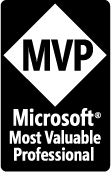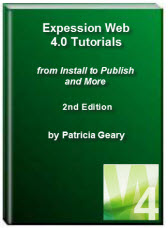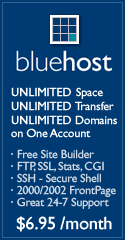- Home
- Expression Web Tutorials
- Installing Expression Web 4
- Setting Up Expression Web 4.0
- Create New Website
- Create a Blank Web Page
- Create a Webpage Layout
- Adding Horizontal Top Navigation
- Adding Vertical Navigation
- Validating Your Pages
- Creating an Expression Web Dynamic Web Template
- Publishing Your Web Site
- How to back up your local website on your hard drive
- SEO Checker and Report
- Adding Insert Include Code into Code Snippets
- Auto Thumbnail in Expression Web
- Broken Dynamic Web Templates and hidden metadata files
- Code Snippets in Expression Web
- Compatibility Checker on Status Bar in Expression Web
- Create and Style a Data Table
- Creating a New Font Family Group
- Creating a New Page from Hyperlink Properties
- Creating web site from site templates in Expression Web
- CSS Properties panel
- Expression Web Preview in Browser
- Expression Web and Design Time Includes
- How to back up your local website on your hard drive
- How to create a Personal Web Package
- Import Site Wizard in Expression Web
- Importing your folders/files into Expression Web
- Inserting Images in Expression Web
- Interactive Buttons in Expression Web
- Migrating a FrontPage Site to Expression Web
- Modify Style Dialog Box
- New Style Dialog Box
- Publishing Your Website from the Remote Server with FrontPage Server Extensions
- Editing Reusable Forms
- Troubleshooting Image Problems in Expression Web
- Validation Error - no attribute "xmlns:v"
- Web Album Generator and Expression Web
- What are all the style# in my page?
- Zoom Search and Expression Web
- Working With Left Border Background Images
- Resources
- Templates
- Web Design Tutorials
- Accessible Forms
- Add a Search Box
- Adding Google Search
- Accessible Data and Layout Tables
- Responsive Tables
- Anchor Tags and Name Attributes
- Best Font Size for Web Design?
- Center Page in Browser Window
- HTML Lists
- How to create and extract a Zip File in Windows
- How to Create a Self-Extracting Zip File
- Validation Error - no attribute "xmlns:v"
- Working With Left Border Background Images
- Handle Background Transparency in Snagit Editor Like You Would in Photoshop
- Bluehost Tutorials
- Add-on Domains at BlueHost
- BlueHost 301 Redirects
- BlueHost Webmail
- Customizing BlueHost Error Pages
- How to make a subfolder the main folder for your BlueHost main domain
- How to change the Primary Domain
- Installing a WordPress Blog Using Simple Scripts
- Mannaging SSL on BH
- Password Protecting Directories and/or Files with Bluehost
- Server Side Includes, BlueHost, and Expression Web
- Expression Web Addins

What Is Search Engine Optimization - SEO?
Search engine optimization (SEO) is the process of improving the volume or quality of traffic to a web site or a web page (such as a blog) from search engines via "natural" or un-paid ("organic" or "algorithmic") search results as opposed to other forms of search engine marketing (SEM) which may deal with paid inclusion. The theory is that the earlier (or higher) a site appears in the search results list, the more visitors it will receive from the search engine. SEO may target different kinds of search, including image search, local search, video search and industry-specific vertical search engines. This gives a web site web presence. ~ from Wikipedia ~
Search Engine Optimization (SEO) refers to a collection of techniques to improve your site's ranking in search engines, be it Google, Yahoo, or any of the others.
One of the new features of Expression Web 4.0 includes Search Engine Optimization tools. The SEO Checker feature of Expression Web helps you understand and apply search engine ranking best practices to obtain the highest possible search engine ranking.
The SEO Checker analyzes specific areas of your site and specific elements in the individual pages of your site. Using the following guidelines can help improve the search-engine ranking of your site.
IMPORTANT: Before you attempt to use the SEO Checker and SEO Report, I encourage you to learn at least the basics of Search Engine Optimization by following some of the basic tips listed in the article below.
How Does Search Engine Optimization (SEO) Work?
A user goes online and types keywords into the search engine of his choice - Google, Yahoo, or Bing. The user may be looking for information such as how to design a web page or a product like a new wireless router. The search engine then returns a list of pages, with each ranked according to its relevance to the user's search query. Search engines use a web crawler or spider to discover and index pages. An important task for you, the web developer is to make sure that search engine crawlers can find and index information on your page so that a search query will guide users to that page.
Pages that have been optimized for search engines follow coding practices that provide relevant information to search engines quickly. Read How Search Engines Read Web Pages
As you work with each page, you need to do YOUR research as to what keywords users search for. Some tools you can use for your research include:
Basic Search Engine Optimization Techniques
There are some basic SEO best techniques you can follow that will help with your search engine optimization. They include BUT are not limited to:
Page Titles
Create unique and accurate page titles that are relevant to the content of that particular page. They should be short and descriptive using about 60 to 65 characters. Remember, that not everyone will enter your site through your "front door." Some may choose a "back door" or the "kitchen door." Treat each and every page as an entry point to your site with unique content and a unique page title.
The page title goes between the <title></title> tags within the head section of your page. The page title tells BOTH the users and the search engines what the page is about.
Page titles can be added from within Expression Web by right clicking on the page and selecting 'Page Properties' > 'General' tab and typing the "Title" in the appropriate box.
Example: <title>Search Engine Optimization - SEO - Search Engine Optimization Techniques</title>
Meta Tag for description
A page's description meta tag gives Google and other search engines a summary of what the page is about. The description meta tag goes within the head section of your page and should be limited to 150 to 200 characters.
<meta name="description" content="Brief description of your site goes here." >
Description meta tags are important because Google and the other search engines might use them as the description that appears under a page's title and above a page's URL in a search result.
Good practices for the description meta tag include"
- Accurately summarize the page's content.
- Use unique descriptions for each page.
- Use the exact title of your page within the description meta.
Page descriptions can be added from within Expression Web by right clicking on the page and selecting 'Page Properties' > 'General' tab and typing the "Page Description" in the appropriate box. View Screenshot
Meta Tag for keywords
As of September 2009, Google no longer uses the keyword meta tag in ranking web search results and support for its use has dwindled as it was easily abused. If you choose to use the keyword meta tag, it is placed in the head section of your page and would look like this.
<meta name="keywords" content="keyword, keyword,keyword" >
The keywords you use should appear on your pages and separated by commas. This tag should NOT be used to stuff with keywords and limited to approximately 150 characters.
Page keywords can be added from within Expression Web by right clicking on the page and selecting 'Page Properties' > 'General' tab and typing the "Keywords" in the appropriate box.
File Names
The file names you choose for your pages (and images for that matter) should reflect the content of the page and the keywords for that particular page. The file name should be short using two or three of your keywords and be unique for each page of your site.
You should never use spaces in your files name and hyphens are preferred over underscores. Do not use overly long file names for either your pages or your images.
If you use spaces in your file names, they will show as my%20file.html. Instead use my-file-name.html.
Heading Tags
Use heading tags appropriately to give structure to your page NOT to style the presentation. There are six sizes of heading tags, beginning with <h1>, the most important, and ending with <h6>, the least important. It is NOT likely you will use all six heading tags on a page. You can read more about heading tags in this article by James Huggins.
Good practices for heading tags include:
- Imagine you're writing an outline.
- Use headings sparingly across the page.
- Use css to style the look of your heading tags.
Alt Attribute
The "alt" attribute allows you to specify alternative text for the image if it cannot be displayed for some reason. For those folks who are using alternative technologies, such as a screen reader, the contents of the alt attribute provide information about the picture. The "alt" attribute is REQUIRED in order for your page to validate. The alt text should give a brief but accurate description of the image using your keywords if it makes sense.
It is also good practice to store your images in their own directory rather than have them spread out throughout your site.
Alt tags can easily be added in Expression Web by right clicking on an image, selecting 'Picture Properties' and on the 'General' tab under 'Accessibility' typing 'Alternate Text' in the appropriate box.
Example: <img alt="Screenshot Page Editor Options General tab." height="225" src="images/ew4-peo-general-tab_small.jpg" width="200" >
Title Attribute
Unlike the TITLE element, which provides information about an entire document and may only appear once, the title attribute may annotate any number of elements. The title attribute specifies extra information about an element and is most often shown as a tooltip text when the mouse moves over the element.
To add the title attribute to hyperlinks in Expression Web, highlight the text you wish to use, and right click or hold down the Ctrl key + K and select hyperlink. In the dialog box, either browse to the file you want to link to OR type the url of the page in the Address: field. Click the 'Screen Tip' button and type the text you wish to use.
IMPORTANT: There is a bug in Expression Web 4.0 that causes the hyperlink dialog box to lose focus if you are working in Design View. Once you click OK from the Screen Tip text box, EW will bring up the last open window you were working with. You will need to return to the EW editing window to continue. This does not happen if you are working in code view and simply type the title attribute with the text you wish to include.
Example: <a title="Screenshot: Setting up Expression Web Page Editor Options > General tab." href="images/ew4-peo-general-tab.jpg">
Content
While all of the tips listed in the previous section will help with Search Engine Optimization, the content of your site is the meat of the site. According to Google, you should "create a useful, information-rich site, and write pages that clearly and accurately describe your content. Think about the words users would type to find your pages, and make sure that your site actually includes those words within it."
In order to be found by the search engines, your content must be readable by them. If your pages are full of flash movies, images and such with very little content, there will not be much there for the spiders to index when they visit your site. So take your time, do your keyword research and develop your content around those well researched keywords.
Remember, that your visitor can enter through any door of your site not just your "front door" or Home Page. Spend as much time developing the content for those other doorways as your front door.
Summary
Now that you know a little more about some of the basics you need to do to optimize your site for the search engines, you can use the newest tools available in Expression Web 4 SEO Checker and SEO Reports.
To learn more about Search Engine Optimization, make use of the resources listed below.
SEO Resources
- Google's Search Engine Optimization Starter Guide
- Search Engine Optimization (SEO) from Google
- Yahoo! Search Content Quality Guidelines
- V7 Network SEO Forum

Copyright © 2010 Pat Geary of Expression Web Tutorials and Templates, All Rights Reserved
Written August 2010
Expression Web 4.0 Tutorials 2nd Edition from Install to Publish, a FREE EBook by Pat Geary.
Expression Web has a group on Facebook. If you are a FB user, come join us.
Disclosure: This is an affiliate link, which means that if you visit Bluehost.com through this link and purchase this product, I’ll get a commission.

April 2007 - April 2013
Privacy Policy | Migrating from FrontPage to Expression Web
Microsoft® and Expression Web® are registered trademarks of Microsoft® Corporation.
Site Design & Maintenance : Expression Web Tutorials & Templates


